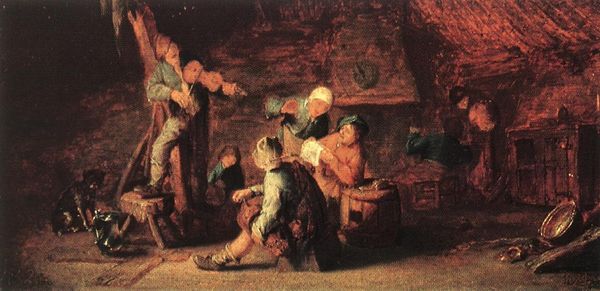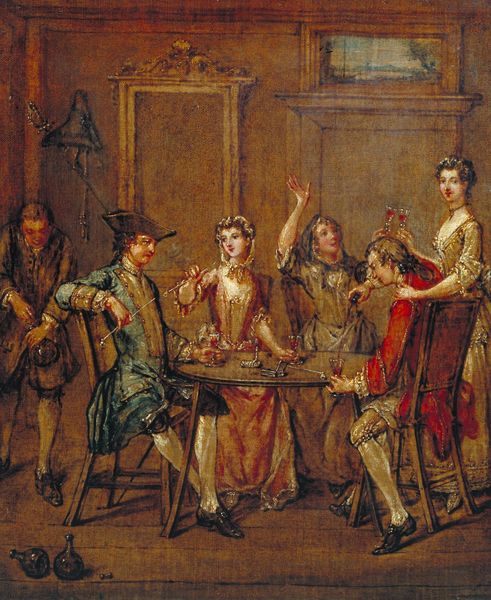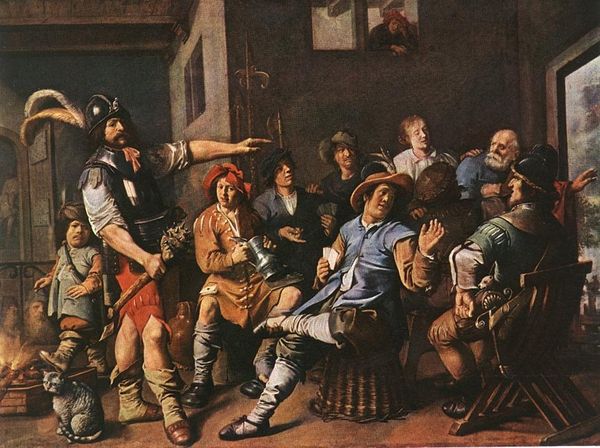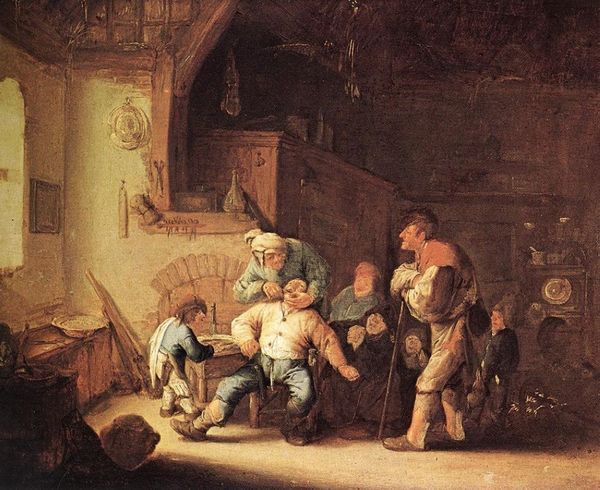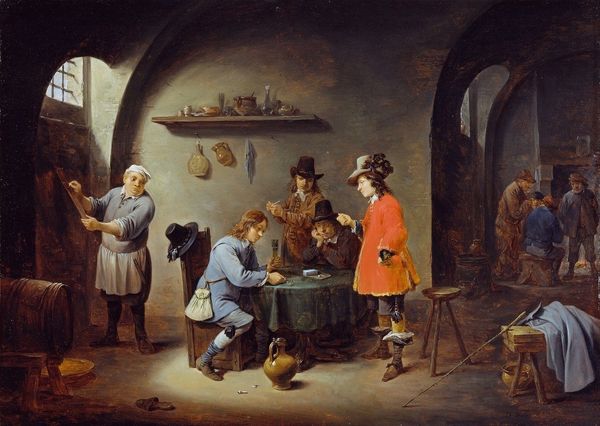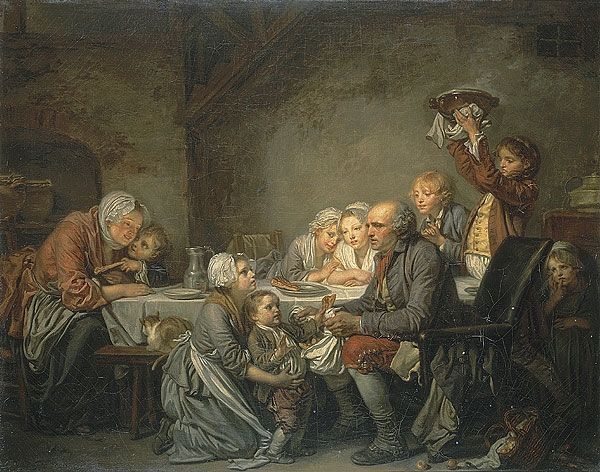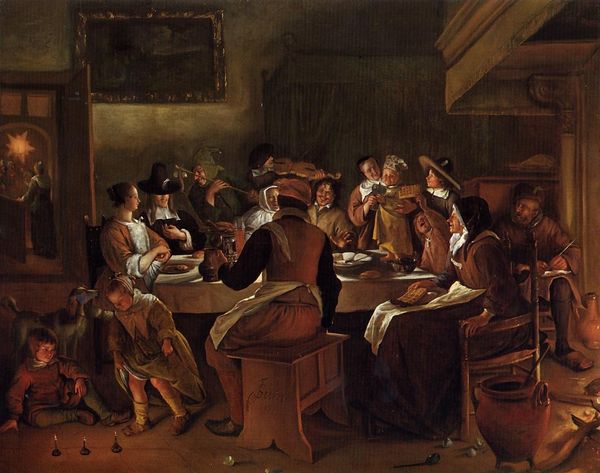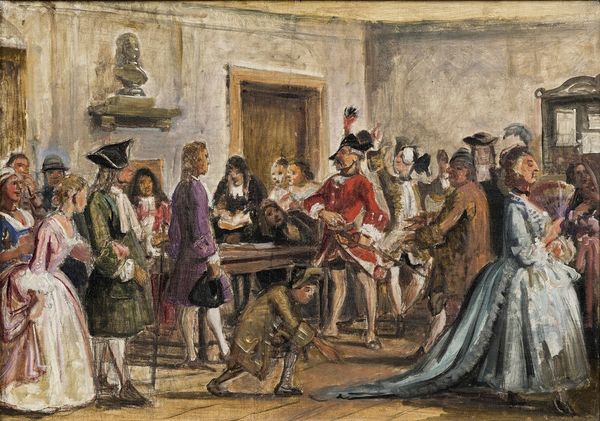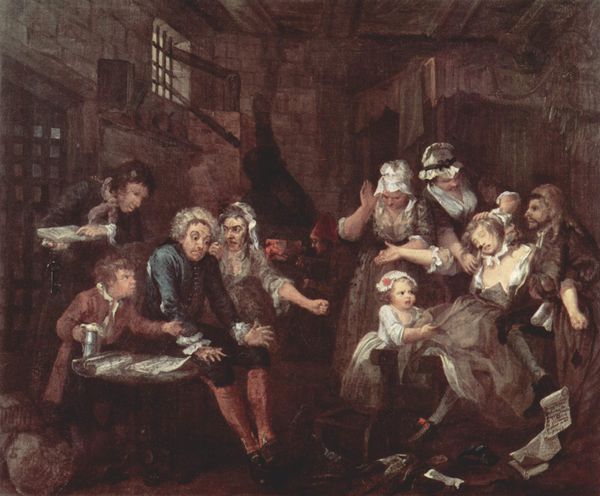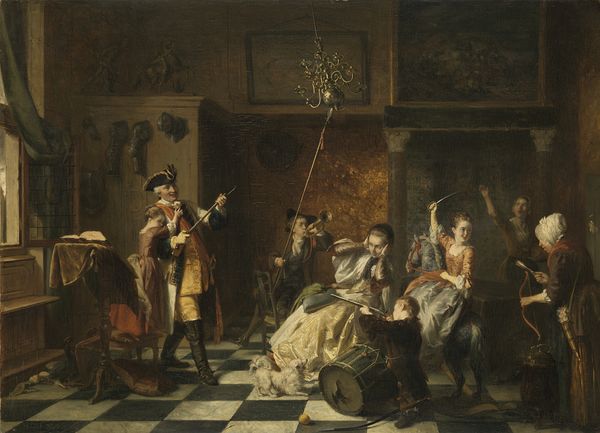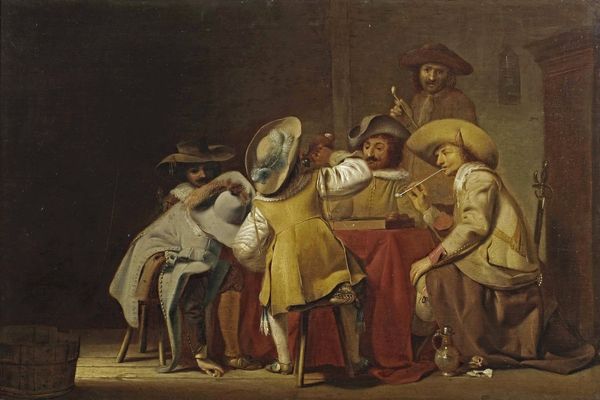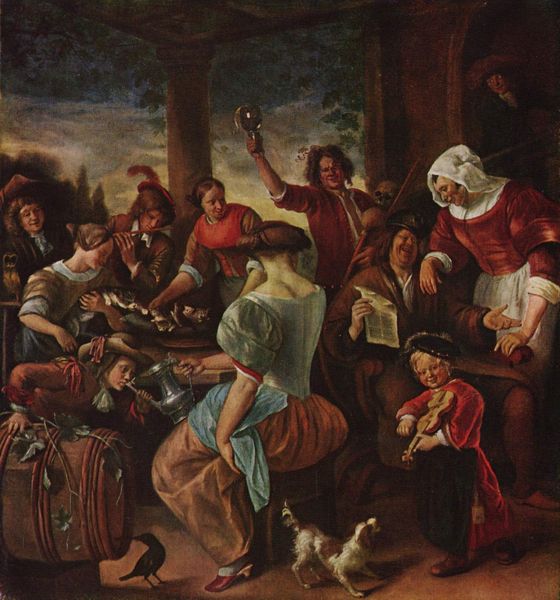
Copyright: Public Domain: Artvee
Curator: Meissonier’s oil painting, “The Lost Game,” from 1858, certainly pulls us into its narrative. The subdued colors and confined setting evoke a rather somber atmosphere, don’t you think? Editor: Somber is definitely one way to put it. To me, the scene radiates with a sense of hushed tension and palpable anxiety. Look at the averted gazes, the close proximity of the figures – they create a sense of impending… doom, perhaps? Curator: Precisely. Meissonier masterfully employs a tight compositional structure. Observe how the figures are clustered around the table, forming a dense, almost claustrophobic arrangement, reinforced by a rich tapestry of browns, greens, and muted reds, punctuated by occasional whites. The strategic arrangement of the figures’ limbs—gesturing hands, leaning bodies—draw the eye directly to the central focus: the card game and the palpable emotional stakes at play. Editor: Right, but these aren't just aesthetic choices—this gathering of soldiers represents the old boys' club, where power and influence were gambled as readily as any card in their hands. The historical moment seethes with patriarchal dominance. Each figure, whether winning or losing, partakes in a system rigged against anyone outside their tight circle. Curator: An insightful interpretation! The details of the clothing and setting are meticulous and speak to historical accuracy, yes, but they also reinforce the composition. The contrast between light and shadow creates drama, directing our attention and enriching the scene's textural elements. Editor: I read the rich detail as a way of romanticizing a bygone era. We are prompted to consider whose history gets told, and from which perspective? This tableau represents a biased version, cleansed of the blood, suffering, and inequality that inevitably underpin such displays of leisure. Are we to admire this ‘lost game,’ or critique the broader societal game of which it is a part? Curator: Well, examining the brushwork and rendering of light underscores Meissonier's incredible skill and his influence on later academic painting, but also creates depth and texture that draw us further into the pictorial space. Editor: Thank you. To me, the real masterpiece is its ability to ignite debate around how we understand, question, and retell history in painting, ensuring that other voices aren't further silenced or erased. Curator: Indeed. Perhaps that constant interplay of art historical tradition with challenging narrative depth is the heart of the experience.
Comments
No comments
Be the first to comment and join the conversation on the ultimate creative platform.
